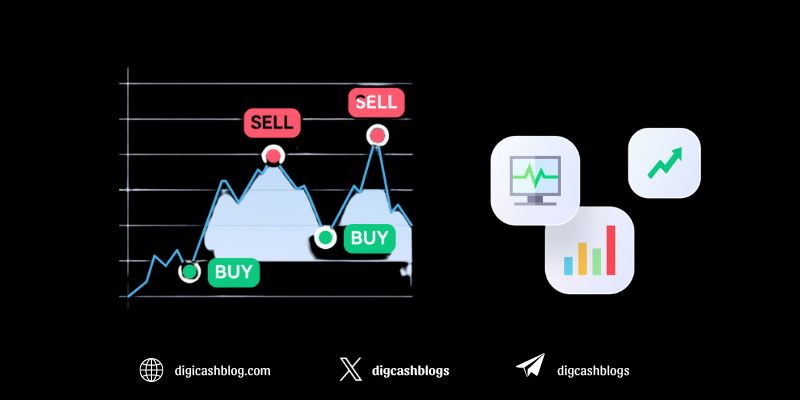Introduction to Advanced Crypto Trading Techniques
The cryptocurrency market is known for its rapid price movements and high volatility, making technical analysis indispensable for traders. Among the most effective tools for navigating this landscape are RSI, MACD, and Bollinger Bands in crypto analysis. While these indicators are beginner-friendly, advanced traders can leverage them in sophisticated strategies to maximize profits and minimize risks. This article explores advanced techniques for using RSI, MACD, and Bollinger Bands, focusing on practical applications and optimization for the crypto market.
RSI: Divergence and Trend Confirmation
The Relative Strength Index (RSI) is more than just an overbought/oversold indicator; it can reveal hidden market dynamics through divergence and trend confirmation.
RSI Divergence: A bullish divergence occurs when the price makes a lower low, but RSI forms a higher low, signaling weakening bearish momentum. Conversely, a bearish divergence (higher high in price, lower high in RSI) suggests fading bullish momentum. For example, if Cardano’s price hits a new low but RSI shows a higher low, it could indicate an upcoming reversal.
Trend Confirmation: In strong trends, RSI may remain in overbought or oversold territory for extended periods. Advanced traders can use this to confirm trend strength rather than assuming an immediate reversal.
Crypto Application: In altcoin markets, RSI divergence is particularly useful during pump-and-dump cycles, helping traders avoid false breakouts and time entries more effectively.

Advanced MACD Strategies: Zero-Line Crossovers and Histogram Analysis
The Moving Average Convergence Divergence (MACD) offers nuanced signals beyond simple line crossovers, especially when analyzing zero-line crossovers and the histogram.
Zero-Line Crossovers: When the MACD line crosses above the zero line, it indicates a shift to bullish momentum, while a cross below signals bearish momentum. These crossovers are more significant in longer time frames (e.g., daily charts).
Histogram Analysis: The MACD histogram measures the distance between the MACD line and the signal line. A shrinking histogram, even without a crossover, can signal weakening momentum, providing early warnings of trend reversals.
Crypto Application: For volatile assets like Dogecoin, the histogram can help traders anticipate reversals before they occur, especially during speculative rallies driven by social media hype.
Bollinger Bands: Breakouts and Volatility Trading
Bollinger Bands are a versatile tool for advanced traders, particularly for identifying breakouts and trading volatility in the crypto market.
Bollinger Band Squeeze: When the bands contract significantly, it indicates low volatility, often followed by a breakout. Advanced traders can combine this with volume analysis to confirm the breakout direction.
Riding the Bands: In strong trends, prices may “ride” the upper or lower Bollinger Band. Instead of assuming an overbought/oversold condition, traders can use this to ride momentum, especially in trending markets like Bitcoin during bull runs.
Crypto Application: For DeFi tokens with erratic price movements, Bollinger Bands can help traders identify breakout opportunities during periods of consolidation, such as after a major protocol upgrade.
Synergizing RSI, MACD, and Bollinger Bands for Advanced Strategies
Combining RSI, MACD, and Bollinger Bands in crypto analysis allows advanced traders to create robust strategies that account for momentum, trend, and volatility.
Divergence and Breakout Strategy: Combine RSI divergence with a Bollinger Band squeeze to identify high-probability breakouts. For instance, a bullish RSI divergence during a Bollinger Band squeeze on Chainlink’s chart could signal a strong upward move.
MACD and Bollinger Band Confirmation: Use MACD zero-line crossovers to confirm Bollinger Band breakouts. A breakout above the upper Bollinger Band with a MACD line crossing above the zero line strengthens the bullish case.
Multi-Time Frame Analysis: Analyze RSI, MACD, and Bollinger Bands across multiple time frames to align short-term trades with long-term trends. For example, a daily bullish MACD crossover combined with a 4-hour RSI divergence can provide a high-confidence entry.

Optimization Tips for Crypto Traders
Custom Indicator Settings: Experiment with non-standard settings, such as a 10-period RSI or a 5,13,1 MACD, to adapt to the crypto market’s unique volatility.
- Volume Confirmation: Use on-chain volume or exchange volume to validate signals from RSI, MACD, and Bollinger Bands, especially in low-liquidity altcoin markets.
- Automated Trading: Implement these indicators in trading bots using platforms like TradingView or Python libraries (e.g., TA-Lib) to automate signal detection and execution.
- Market Context: Consider external factors like Bitcoin dominance, funding rates, or whale activity, as these can influence indicator reliability in the crypto space.
Pitfalls to Avoid in Crypto Analysis
- Over-Reliance on Indicators: No single indicator or combination is infallible. Always cross-check with other data points, such as support/resistance levels or on-chain metrics.
- Ignoring Market News: Sudden events, like exchange hacks or regulatory announcements, can invalidate technical signals. Stay updated with crypto news to contextualize indicator readings.
- Overtrading: Frequent signals from RSI or MACD in short time frames can lead to overtrading. Focus on high-probability setups to avoid losses.
Advanced traders can unlock the full potential of RSI, MACD, and Bollinger Bands in crypto analysis by leveraging divergences, zero-line crossovers, and volatility-based strategies. These indicators, when combined thoughtfully, provide a comprehensive view of market dynamics, enabling traders to navigate the crypto market’s complexities with confidence. By optimizing settings, incorporating volume analysis, and staying mindful of market context, traders can enhance their strategies and achieve consistent results in the ever-evolving world of cryptocurrency trading.
